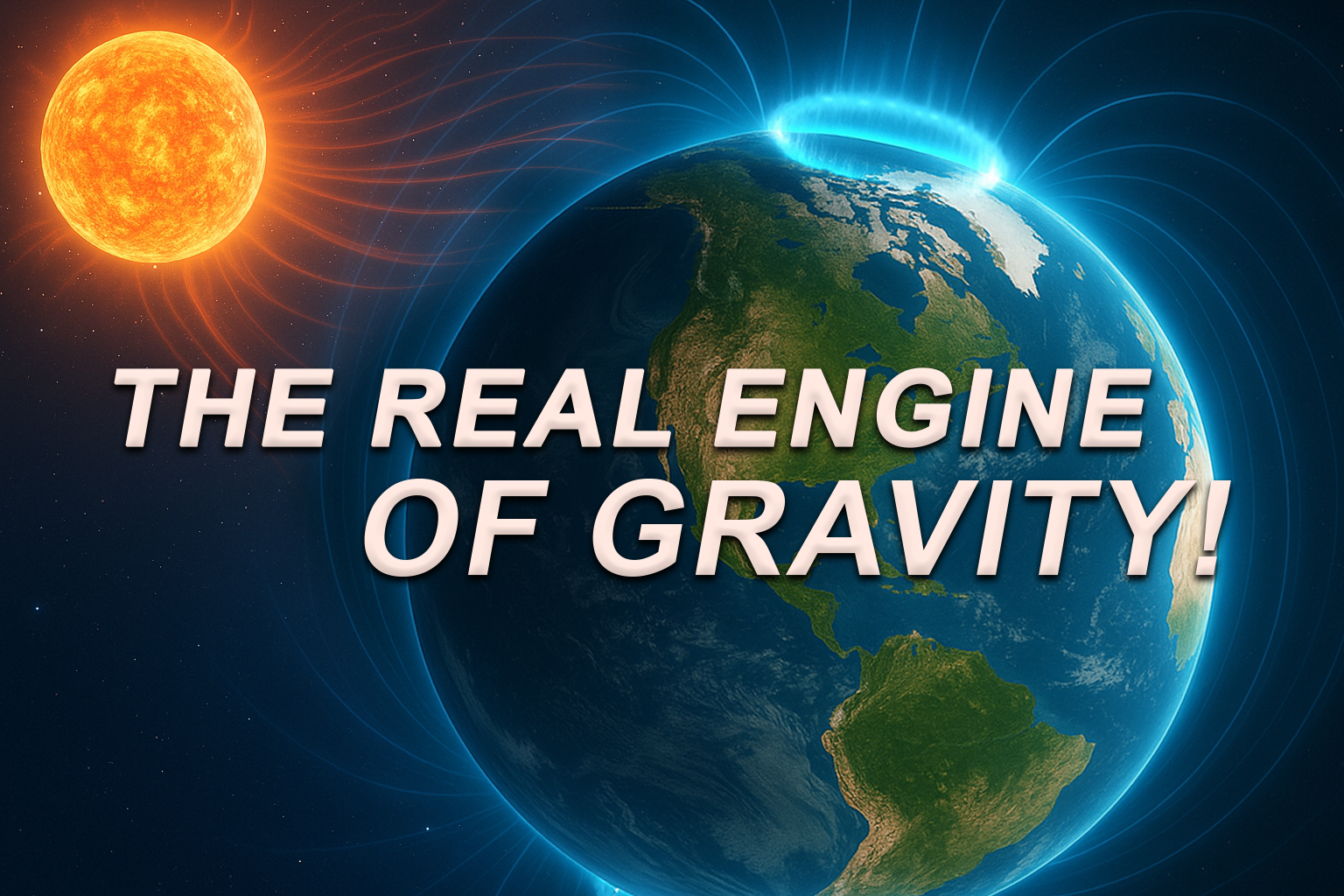Seismic Coupling, Atmospheric Pressure, and Orbital Stability via Solar Wave Resonance
Abstract
Acoustic Gravitic Theory redefines gravity and orbital mechanics through the lens of wave resonance and pressure gradients. On Earth, gravity arises not from mass-based attraction but from seismic-acoustic coupling caused by solar ELF, ULF, and Alfvén waves inducing magnetic feedback within the planet’s core. This process creates upward-propagating pressure waves reverberating through the atmosphere, exerting a net downward force on objects. In space, planetary orbits are stabilized by First Bjerknes-type interactions, where planets behave as resonant cavities within the solar wave field. These cavities—comprised of the atmospheric shell, ionosphere, and magnetosphere—resonate with solar magnetosonic waves, anchoring planets in place through pressure-based phase-locking, independent of mass or spacetime curvature.
1. Earth’s Gravity: A Result of Seismic-Acoustic Pressure Fields
a. Inductive Coupling via Lenz’s Law
- The Sun emits continuous ELF, ULF, and Alfvén waves along magnetic flux lines that connect to Earth’s poles via Birkeland currents.
- These incoming waves induce a phase-inverted magnetic response inside the Earth, as described by Lenz’s Law.
b. Seismic Pressure Wave Generation
- The inverted magnetic field triggers oscillatory motion in Earth’s conductive interior, producing seismic pressure waves.
- These waves propagate outward from the core and crust, transferring energy upward into the atmosphere.
c. Atmospheric Pressure Gradients
- As seismic energy reaches the atmosphere, it becomes acoustic in nature, primarily in the infrasound and ULF range.
- These waves create oscillating pressure gradients that interact with solid bodies.
- Due to impedance mismatch, solid objects resist oscillation, resulting in a net downward force — experienced as weight.
2. Orbital Mechanics: Bjerknes Forces in Nested Resonant Cavities
a. The Resonant Cavity Model
Planetary orbits are maintained through resonant phase-locking between solar pressure waves and planetary boundary layers:
- Atmospheric Shell: Troposphere through Exosphere — provides acoustic resonance and filters wave inputs.
- Ionosphere: Conductive plasma layer that resonates with ELF, ULF, and Alfvén waves, even in planets without a magnetic field.
- Magnetosphere: The Outermost electromagnetic cavity that interacts first with magnetosonic solar waves.
b. First Bjerknes-Type Interactions
- In fluid dynamics, the First Bjerknes force arises when a single cavity is subjected to an external oscillating pressure field.
- In space, the Sun is the oscillatory source, and planets respond as cavity-bound impedance structures.
- The result is a net pressure force that stabilizes the planet’s position in the heliosphere—not due to inertia or gravitational pull but due to wave-locked pressure nodes.
c. Standing Wave Anchoring
- Solar rotation and coronal activity produce magnetosonic standing waves that fill the heliosphere.
- Each planet is held in place by phase resonance with these waves, with its orbital distance dictated by the size and response frequency of its resonant cavities.
3. Birkeland Currents and Global Feedback Circuits
- Birkeland currents form direct electrical conduits between the Sun and planetary poles.
- These currents enable two-way plasma flows:
- Updrafts of ions from the ionosphere (polar wind)
- Downdrafts of electrons into the auroral regions
- This circuit completes a global energy feedback loop, maintaining planetary resonance with solar energy.
This feedback:
- Sustains the inductive magnetic loop driving seismic activity on Earth
- Maintains orbital pressure balance within the magnetosphere–ionosphere–atmospheric shell system
4. Application to Magnetosphere-Free Planets
- Venus and Mars lack global magnetospheres but maintain orbital stability.
- Their ionospheres and atmospheric shells act as resonant boundaries.
- The wave-based model explains their orbits without invoking gravitational pull, using only:
- Solar wave input
- Impedance-bound wave reflections
- Resonant phase-locking with the heliospheric standing wave structure
Conclusion
In Acoustic Gravitic Theory, gravity on Earth is caused by solar-induced seismic pressure waves, not by attraction. These waves, generated through magnetic induction via Lenz’s Law, create standing infrasound fields in the atmosphere, pressing down on matter through impedance mismatch. In space, planetary orbits are maintained through First Bjerknes-type forces, where each planet’s atmospheric shell, ionosphere, and magnetosphere act as resonant cavities that lock into solar magnetosonic wave patterns. This nested cavity system replaces the need for gravity wells, mass-based attraction, or spacetime distortion, offering a unified, wave-centric model of both local gravity and cosmic order.


Leave a Reply